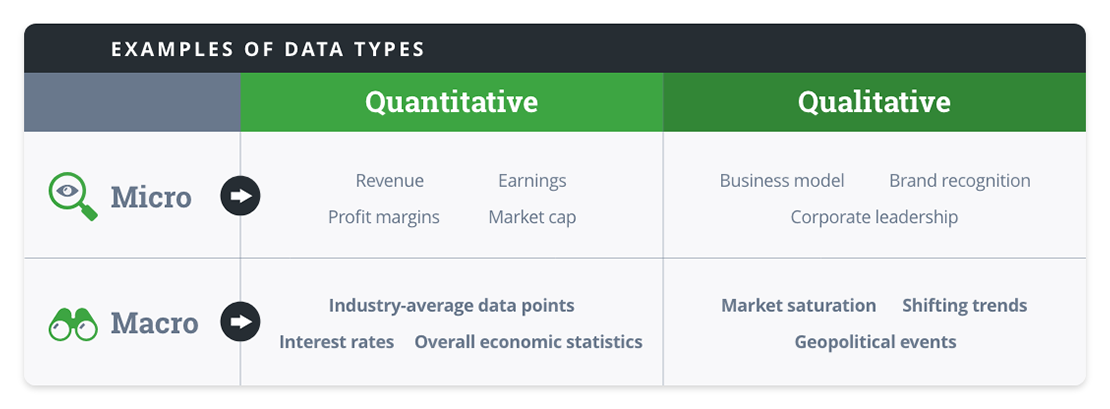The purpose of fundamental analysis is to determine the intrinsic (or “true”) value of a security, as free from personal or market bias as possible. This can have two outcomes: it can help an investor to get a sense of the long-term profitability of an investment, while also indicating if the current trading price of the security is a good deal relative to its true value.
While we will talk about fundamental analysis in the context of stocks in this article, some of the principles can also apply to other investment products such as ETFs, bonds, foreign exchange contracts, and more.
Fundamental analysis is often contrasted to its counterpart, technical analysis, which focuses on historical trends and market movements rather than the intrinsic value of the underlying company or security.


